Tourism in Malaysia offers a rich tapestry of experiences, from bustling cityscapes to serene natural landscapes. SIXT.VN understands the allure of exploring this diverse country and provides tailored travel solutions to ensure a seamless and unforgettable journey. Discover Malaysia’s cultural gems, culinary delights, and breathtaking scenery, all while enjoying the convenience and reliability that SIXT.VN offers. With SIXT.VN, you can explore Malaysia with confidence, knowing that your transportation, accommodation, and tour arrangements are expertly handled.
1. What Makes Malaysia a Unique Tourist Destination?
Malaysia is a unique tourist destination because of its harmonious blend of cultures, stunning landscapes, and modern infrastructure. This diversity creates an unparalleled travel experience.
Malaysia’s unique appeal lies in its seamless fusion of Malay, Chinese, Indian, and indigenous cultures, offering visitors a vibrant mosaic of traditions, cuisines, and festivals. According to Tourism Malaysia, this multiculturalism is a key draw for international tourists. The country’s commitment to preserving its heritage while embracing modernity is evident in its well-maintained historical sites and contemporary urban centers.
Here’s why Malaysia stands out:
- Cultural Melting Pot: Malaysia’s multicultural society is a significant attraction. You’ll find Malay, Chinese, Indian, and indigenous cultures coexisting harmoniously.
- Diverse Landscapes: From the skyscrapers of Kuala Lumpur to the rainforests of Borneo, Malaysia offers a wide array of natural and urban landscapes.
- Modern Infrastructure: Compared to some Southeast Asian countries, Malaysia boasts well-developed infrastructure, making travel within the country convenient and comfortable.
- English Proficiency: English is widely spoken, reducing communication barriers for international tourists.
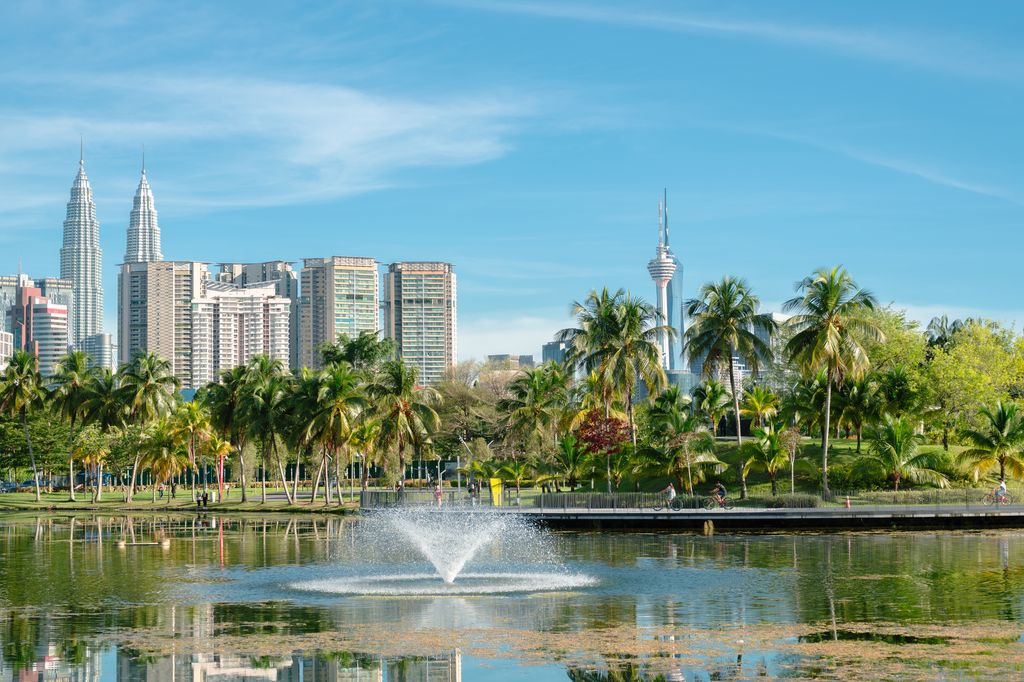 Kuala Lumpur skyline at dusk, showcasing modern skyscrapers and vibrant city lights
Kuala Lumpur skyline at dusk, showcasing modern skyscrapers and vibrant city lights
2. What Are the Key Cultural Experiences in Malaysia?
The key cultural experiences in Malaysia include exploring historical sites, indulging in diverse cuisine, and participating in vibrant festivals, which showcases its rich heritage.
Malaysia’s cultural tapestry is woven from Malay, Chinese, Indian, and indigenous influences, offering a rich array of experiences. UNESCO recognizes Georgetown and Malacca as World Heritage Sites, highlighting their historical significance. Travelers can immerse themselves in these cities’ colonial architecture, vibrant street art, and diverse culinary offerings. Cultural festivals like Hari Raya Aidilfitri, Chinese New Year, and Deepavali provide unique opportunities to witness Malaysia’s traditions firsthand, according to the Department of National Heritage.
Here’s a glimpse into Malaysia’s cultural offerings:
- Historical Sites: Visit UNESCO World Heritage sites like Georgetown and Malacca to explore colonial architecture and historical landmarks.
- Culinary Delights: Indulge in Malaysia’s diverse cuisine, influenced by Malay, Chinese, and Indian flavors. Don’t miss local favorites like Nasi Lemak, Laksa, and Char Kway Teow.
- Religious Diversity: Explore mosques, temples, and churches that reflect Malaysia’s multicultural society.
- Festivals and Celebrations: Experience vibrant festivals such as Hari Raya Aidilfitri, Chinese New Year, and Deepavali, which offer a glimpse into Malaysia’s cultural traditions.
3. What Natural Attractions Does Malaysia Offer Tourists?
Malaysia offers tourists a wealth of natural attractions, including lush rainforests, stunning beaches, and diverse wildlife, making it a haven for nature lovers.
Malaysia’s natural beauty is a major draw, with its lush rainforests, pristine beaches, and diverse wildlife. Borneo, in particular, is renowned for its biodiversity, offering opportunities to spot orangutans in the wild and explore vast cave systems like the Mulu Caves. According to the Ministry of Environment and Water, Malaysia is committed to preserving its natural heritage, making it an ideal destination for eco-tourism. Destinations like Taman Negara National Park and Sipadan Island provide unforgettable experiences for nature enthusiasts.
Explore Malaysia’s natural beauty:
- Rainforests of Borneo: Explore the biodiverse rainforests of Borneo, home to orangutans, proboscis monkeys, and a variety of other wildlife.
- Beaches and Islands: Relax on the stunning beaches of Langkawi, Perhentian Islands, and Tioman Island, known for their clear waters and vibrant marine life.
- National Parks: Visit Taman Negara National Park, one of the world’s oldest rainforests, for hiking and wildlife spotting.
- Diving and Snorkeling: Discover vibrant coral reefs and marine life at Sipadan Island, consistently ranked among the world’s best dive sites.
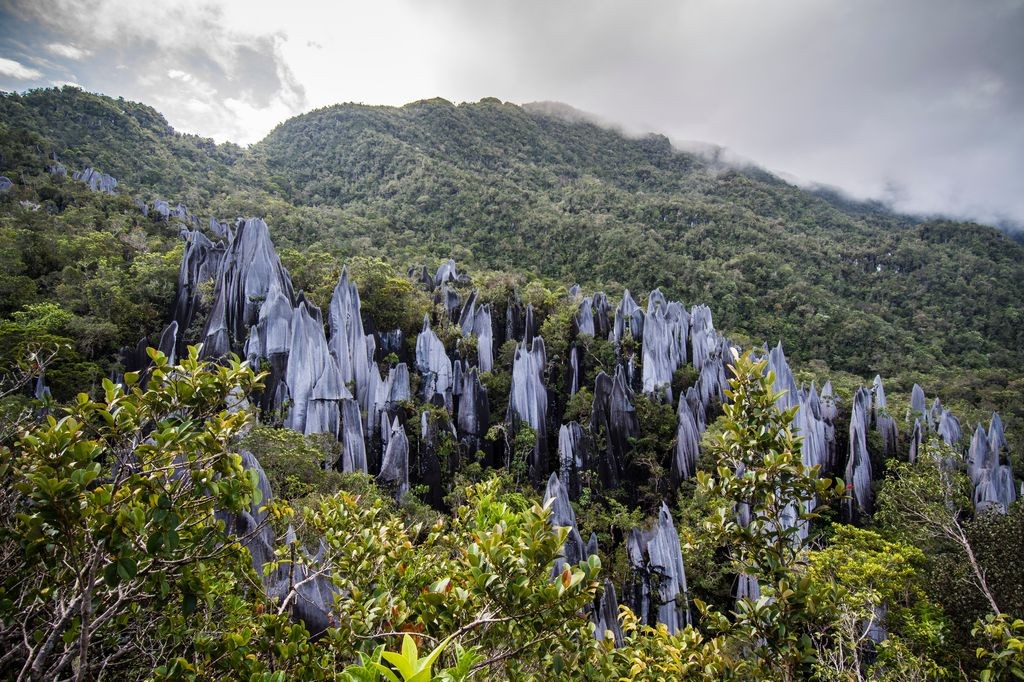 The Pinnacle Rocks of Gunung Mulu National Park, Malaysia
The Pinnacle Rocks of Gunung Mulu National Park, Malaysia
4. How Developed Is Malaysia’s Tourism Infrastructure?
Malaysia’s tourism infrastructure is highly developed, providing excellent transportation, accommodation, and tourist services. It ensures a comfortable and convenient experience for visitors.
Malaysia boasts a well-developed tourism infrastructure, ensuring a comfortable and convenient experience for visitors. According to the World Economic Forum’s Travel & Tourism Competitiveness Report, Malaysia ranks favorably in terms of infrastructure, including air connectivity, ground transport, and tourist services. The country’s commitment to maintaining high standards is evident in its quality accommodations, efficient transportation networks, and comprehensive tourist information services.
Here’s what you can expect from Malaysia’s tourism infrastructure:
- Transportation: Malaysia has a well-developed network of roads, trains, and buses, making it easy to travel between cities and regions.
- Accommodation: From budget-friendly hostels to luxury hotels, Malaysia offers a wide range of accommodation options to suit every traveler’s needs.
- Tourist Services: English is widely spoken, and tourist information centers are readily available to assist visitors with their travel plans.
- Connectivity: Enjoy reliable internet connectivity throughout the country, making it easy to stay connected and plan your itinerary on the go.
5. What Are the Accommodation Options Available to Tourists in Malaysia?
Tourists in Malaysia have access to a wide range of accommodation options, from budget hostels to luxury hotels, catering to diverse preferences and budgets.
Malaysia offers a wide spectrum of accommodation options to suit every traveler’s needs and budget. From budget-friendly hostels and guesthouses to luxurious hotels and resorts, there’s something for everyone. According to Booking.com, Kuala Lumpur, Penang, and Langkawi offer the most diverse range of accommodations, catering to both budget travelers and those seeking high-end experiences. Many establishments prioritize comfort and convenience, ensuring a pleasant stay for visitors.
Here’s a breakdown of the accommodation options:
- Budget Hostels and Guesthouses: Ideal for backpackers and budget travelers, offering basic amenities and a social atmosphere.
- Mid-Range Hotels: Comfortable and affordable, these hotels provide a good balance of quality and price.
- Luxury Hotels and Resorts: Offering top-notch amenities, world-class service, and stunning locations, perfect for a luxurious getaway.
- Serviced Apartments: A great option for families or travelers who prefer more space and self-catering facilities.
6. How Affordable Is Traveling in Malaysia Compared to Other Southeast Asian Countries?
Traveling in Malaysia is generally affordable compared to other Southeast Asian countries, offering good value for money with quality services and amenities.
Malaysia offers excellent value for money, balancing affordability with quality services and amenities. While it may not be as cheap as Vietnam or Cambodia, Malaysia provides a higher standard of living at a reasonable cost. According to Numbeo, the cost of living in Malaysia is lower than in Singapore and Thailand, making it an attractive destination for budget-conscious travelers seeking comfort and convenience.
Here’s a comparison of travel costs in Malaysia:
- Accommodation: Affordable options range from $10-$30 per night, while mid-range hotels cost around $40-$80.
- Food: Street food can cost as little as $2-$5 per meal, while restaurant dining ranges from $10-$20.
- Transportation: Public transport is affordable, with bus and train fares typically costing $1-$5 for short journeys.
- Activities: Many attractions offer affordable entrance fees, with national parks and museums costing around $5-$15.
7. What Types of Food Can Tourists Expect to Find in Malaysia?
Tourists in Malaysia can expect to find a diverse range of culinary delights, influenced by Malay, Chinese, Indian, and indigenous flavors, offering a unique gastronomic experience.
Malaysian cuisine is a vibrant tapestry of flavors, influenced by Malay, Chinese, Indian, and indigenous culinary traditions. According to the “Malaysia Food Guide” by Tourism Malaysia, the country is a food lover’s paradise, offering a diverse range of dishes to suit every palate. From street food to fine dining, Malaysia’s culinary scene is a major attraction for tourists.
Here are some must-try foods in Malaysia:
- Nasi Lemak: Malaysia’s national dish, consisting of fragrant rice cooked in coconut milk and pandan leaf, served with fried chicken, sambal, peanuts, and anchovies.
- Laksa: A spicy noodle soup with a rich broth, available in various regional variations such as Assam Laksa and Curry Laksa.
- Char Kway Teow: Stir-fried rice noodles with prawns, cockles, Chinese sausage, and bean sprouts in a savory sauce.
- Roti Canai: A flaky flatbread served with dhal or curry, popular for breakfast or as a snack.
- Satay: Grilled skewers of marinated meat served with peanut sauce, cucumbers, and onions.
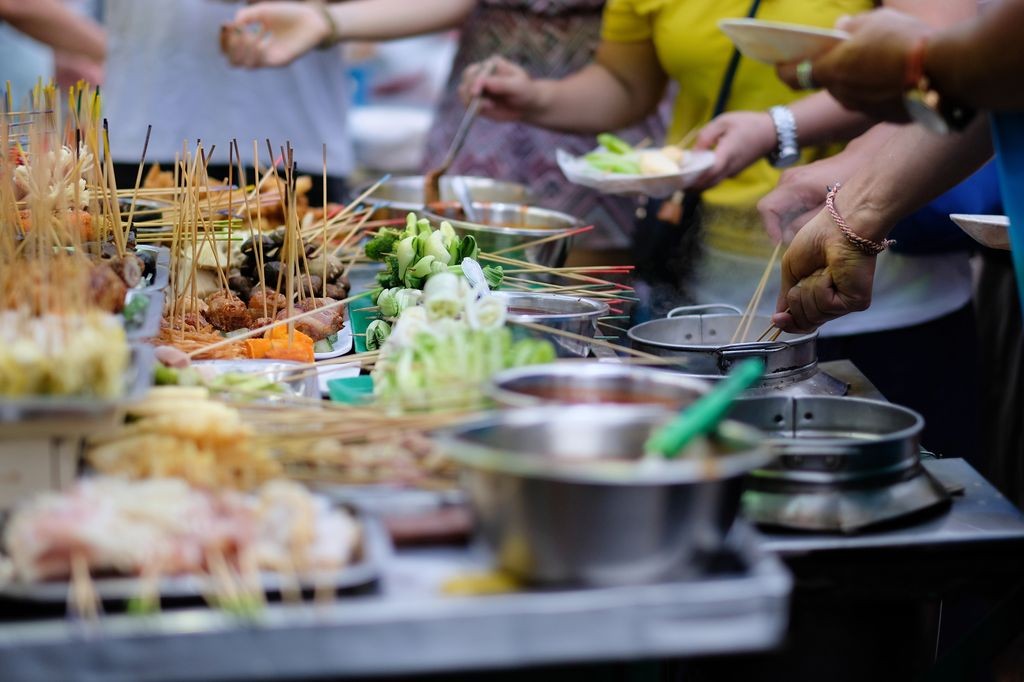 Food being prepared in the streets of Malaysia, showcasing traditional Lok Lok street food
Food being prepared in the streets of Malaysia, showcasing traditional Lok Lok street food
8. What Are Some Popular Tourist Destinations in Peninsular Malaysia?
Popular tourist destinations in Peninsular Malaysia include Kuala Lumpur, Penang, and Langkawi, each offering unique cultural, historical, and natural attractions.
Peninsular Malaysia is home to a variety of popular tourist destinations, each offering unique attractions and experiences. According to TripAdvisor, Kuala Lumpur, Penang, and Langkawi are consistently ranked among the top destinations in Malaysia, attracting millions of visitors each year. These cities offer a blend of cultural heritage, natural beauty, and modern amenities, making them ideal for both leisure and adventure travelers.
Explore these popular destinations:
- Kuala Lumpur: The capital city, known for its iconic Petronas Twin Towers, vibrant street markets, and diverse culinary scene.
- Penang: A UNESCO World Heritage site, famous for its colonial architecture, street art, and delicious hawker food.
- Langkawi: An island paradise with stunning beaches, duty-free shopping, and lush rainforests.
- Malacca: A historical city with a rich colonial past, offering a glimpse into Malaysia’s multicultural heritage.
- Cameron Highlands: A cool mountain retreat with tea plantations, strawberry farms, and scenic hiking trails.
9. What Tourist Activities Can Be Enjoyed in Borneo?
Borneo offers a range of tourist activities, including wildlife watching, cave exploration, and jungle trekking, providing adventure and nature experiences.
Borneo, also known as East Malaysia, is a haven for nature and adventure enthusiasts. According to the Sabah Tourism Board, wildlife watching, cave exploration, and jungle trekking are among the most popular activities in Borneo. The island’s unique biodiversity and stunning landscapes provide unforgettable experiences for travelers seeking adventure and natural beauty.
Here are some popular activities in Borneo:
- Wildlife Watching: Visit Kinabatangan River to spot proboscis monkeys, orangutans, and other wildlife in their natural habitat.
- Cave Exploration: Explore the vast cave systems of Mulu National Park, including the famous Sarawak Chamber and Deer Cave.
- Jungle Trekking: Hike through the dense rainforests of Borneo, discovering hidden waterfalls, unique flora, and diverse fauna.
- Mount Kinabalu Climbing: Ascend Southeast Asia’s highest peak for panoramic views of Borneo.
- Diving and Snorkeling: Discover vibrant coral reefs and marine life at Sipadan Island and other dive sites around Borneo.
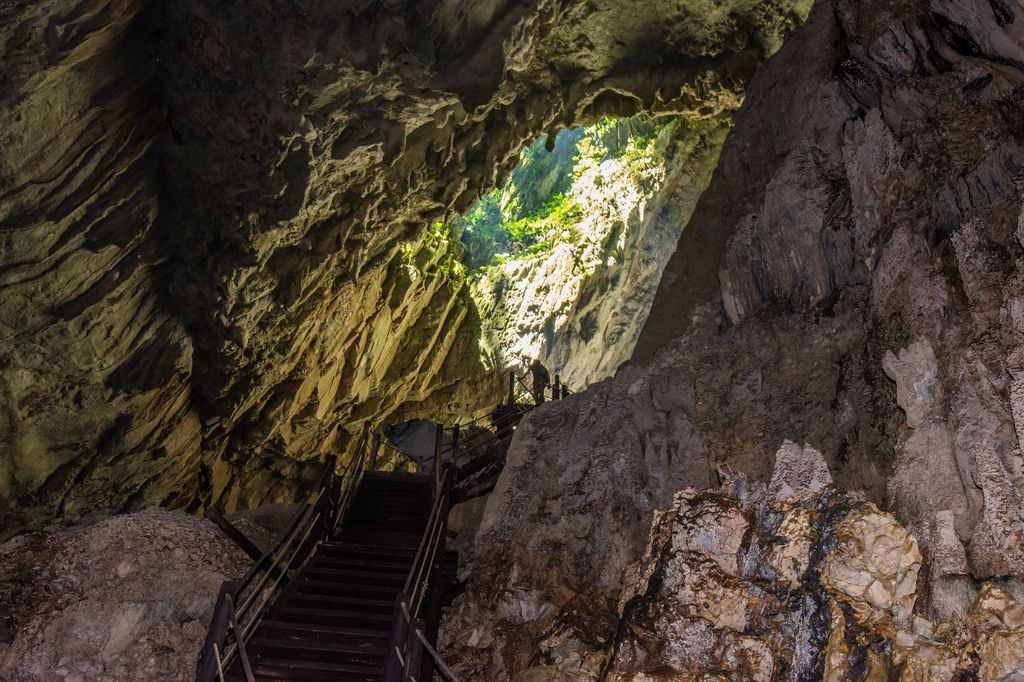 The opening of a cave from the inside at Gunung Mulu National Park in Malaysia
The opening of a cave from the inside at Gunung Mulu National Park in Malaysia
10. What Are Some Cultural Considerations for Tourists Visiting Malaysia?
Tourists visiting Malaysia should be mindful of cultural considerations, including dressing modestly and respecting local customs, ensuring a respectful and enjoyable visit.
When visiting Malaysia, it’s important to be mindful of local customs and traditions. According to the Department of Islamic Development Malaysia, dressing modestly, especially when visiting religious sites, is highly recommended. Additionally, respecting local customs and etiquette will enhance your travel experience and foster positive interactions with the local community.
Here are some cultural considerations to keep in mind:
- Dress Modestly: When visiting religious sites, such as mosques and temples, dress modestly by covering your shoulders and knees.
- Remove Shoes: It is customary to remove your shoes before entering homes and religious sites.
- Use Right Hand: Use your right hand when eating, giving, or receiving items, as the left hand is considered unclean.
- Public Displays of Affection: Avoid excessive public displays of affection, as they may be considered inappropriate.
- Respect Religious Customs: Be respectful during prayer times and avoid loud noises or disruptive behavior near mosques.
11. What Are the Visa Requirements for Tourists Visiting Malaysia?
Visa requirements for tourists visiting Malaysia vary depending on their nationality, with many countries eligible for visa-free entry for up to 90 days, simplifying travel planning.
Visa requirements for tourists visiting Malaysia vary depending on their nationality. According to the Immigration Department of Malaysia, many countries are eligible for visa-free entry for up to 90 days, making it easy for tourists to visit and explore the country. It is always advisable to check the latest visa regulations before planning your trip.
Here are some general guidelines:
- Visa-Free Entry: Many nationalities, including those from the USA, Canada, Australia, and most European countries, can enter Malaysia without a visa for tourism purposes for up to 90 days.
- Visa on Arrival: Some nationalities may be eligible for a visa on arrival, but it’s best to check the specific requirements beforehand.
- Visa Application: If a visa is required, you can apply at the nearest Malaysian embassy or consulate.
- Passport Validity: Ensure your passport is valid for at least six months beyond your intended stay in Malaysia.
12. How Safe Is Malaysia for Tourists?
Malaysia is generally safe for tourists, with a low crime rate and stable political environment, ensuring a secure and enjoyable travel experience.
Malaysia is generally considered a safe country for tourists. According to the Global Peace Index, Malaysia ranks favorably in terms of safety and security, with a low crime rate and stable political environment. However, it’s always wise to take precautions and be aware of your surroundings to ensure a secure and enjoyable travel experience.
Here are some safety tips for tourists in Malaysia:
- Petty Theft: Be aware of your belongings and avoid displaying expensive items in public areas.
- Scams: Be cautious of scams targeting tourists, such as fake tour operators or overpriced taxi fares.
- Traffic Safety: Exercise caution when crossing roads and be aware of traffic conditions, especially in urban areas.
- Emergency Numbers: Know the local emergency numbers, such as police (999) and ambulance (999).
- Stay Informed: Keep up-to-date with local news and travel advisories.
13. What Is the Best Time of Year to Visit Malaysia?
The best time to visit Malaysia is during the dry season, from March to September, offering pleasant weather and ideal conditions for outdoor activities and sightseeing.
The best time to visit Malaysia depends on the region and your travel preferences. According to the Malaysian Meteorological Department, the dry season, from March to September, generally offers pleasant weather and ideal conditions for outdoor activities and sightseeing. However, it’s important to note that Malaysia experiences a tropical climate, with high humidity and occasional rainfall throughout the year.
Here’s a seasonal guide:
- March to September (Dry Season): Ideal for visiting most parts of Malaysia, with sunny skies and lower humidity.
- October to February (Monsoon Season): Expect heavier rainfall, especially on the east coast of Peninsular Malaysia and in Borneo.
- Year-Round: Kuala Lumpur and other urban areas can be visited year-round, with indoor attractions and activities available during rainy days.
14. What Should Tourists Pack When Visiting Malaysia?
Tourists visiting Malaysia should pack light clothing, comfortable shoes, sunscreen, insect repellent, and any necessary medications, preparing them for the tropical climate and outdoor activities.
When packing for a trip to Malaysia, it’s important to consider the tropical climate and the types of activities you plan to do. According to travel experts at Lonely Planet, light, breathable clothing, comfortable shoes, and essential toiletries are must-haves for any trip to Malaysia.
Here’s a packing checklist:
- Light Clothing: Pack lightweight, breathable clothing made from cotton or linen to stay comfortable in the tropical heat.
- Comfortable Shoes: Bring comfortable walking shoes or sandals for exploring cities and hiking trails.
- Sunscreen and Insect Repellent: Protect yourself from the sun and mosquitoes with high-SPF sunscreen and insect repellent.
- Rain Gear: Pack a lightweight raincoat or umbrella, especially if you’re traveling during the monsoon season.
- Medications: Bring any necessary medications, along with a copy of your prescription.
- Adapters: Malaysia uses Type G plugs, so bring a universal adapter if needed.
15. How Can Tourists Get Around in Malaysia?
Tourists can get around in Malaysia using various transportation options, including taxis, buses, trains, and ride-hailing services, providing convenient and affordable travel solutions.
Malaysia offers a variety of transportation options to suit every traveler’s needs and budget. According to the Land Public Transport Agency, taxis, buses, trains, and ride-hailing services are readily available in most cities and towns, providing convenient and affordable travel solutions.
Here are the main transportation options:
- Taxis: Taxis are widely available in urban areas and can be hailed on the street or booked through ride-hailing apps.
- Buses: An extensive network of buses connects major cities and towns, offering a cost-effective way to travel.
- Trains: The Keretapi Tanah Melayu (KTM) railway provides comfortable and scenic train journeys across Peninsular Malaysia.
- Ride-Hailing Services: Apps like Grab are popular and convenient for getting around in cities.
- Car Rental: Renting a car is a good option for exploring more remote areas, but be aware of traffic conditions and driving regulations.
16. What Role Does Ecotourism Play in Malaysian Tourism?
Ecotourism plays a significant role in Malaysian tourism, promoting sustainable travel practices, conservation efforts, and community engagement to protect the country’s natural and cultural heritage.
Ecotourism plays a crucial role in Malaysia’s tourism industry, promoting sustainable travel practices, conservation efforts, and community engagement. According to the Ecotourism & Conservation Society Malaysia (ECOMY), ecotourism initiatives help protect the country’s natural and cultural heritage while providing economic benefits to local communities.
Here are some key aspects of ecotourism in Malaysia:
- Sustainable Practices: Ecotourism operators promote sustainable practices such as waste reduction, energy conservation, and responsible wildlife viewing.
- Conservation Efforts: Ecotourism activities support conservation projects aimed at protecting endangered species and preserving natural habitats.
- Community Engagement: Local communities are actively involved in ecotourism initiatives, providing opportunities for economic empowerment and cultural preservation.
- Education and Awareness: Ecotourism promotes education and awareness about environmental issues, encouraging travelers to be responsible and respectful of nature.
17. What Are the Top Family-Friendly Tourist Attractions in Malaysia?
The top family-friendly tourist attractions in Malaysia include theme parks, zoos, and aquariums, offering fun and educational experiences for visitors of all ages.
Malaysia offers a wide range of family-friendly tourist attractions that cater to visitors of all ages. According to Tourism Malaysia, theme parks, zoos, and aquariums are among the most popular choices for families, providing fun and educational experiences.
Here are some top family-friendly attractions:
- Legoland Malaysia: A theme park featuring Lego-themed rides, shows, and attractions.
- Sunway Lagoon Theme Park: A multi-park destination with water parks, amusement parks, and wildlife encounters.
- Zoo Negara: The national zoo of Malaysia, home to a diverse collection of animals from around the world.
- Aquaria KLCC: An underwater aquarium located beneath the Kuala Lumpur Convention Centre, showcasing marine life from Malaysia and beyond.
- KidZania Kuala Lumpur: An interactive edutainment center where kids can role-play different professions and learn about the world of work.
18. How Does Malaysia Promote Tourism Through Digital Marketing?
Malaysia promotes tourism through digital marketing by utilizing social media, targeted online advertising, and collaborations with travel influencers to reach a global audience and showcase its diverse attractions.
Malaysia actively promotes tourism through digital marketing strategies, leveraging social media, targeted online advertising, and collaborations with travel influencers. According to the Malaysia Digital Economy Corporation (MDEC), these efforts aim to reach a global audience and showcase the country’s diverse attractions.
Here are some key digital marketing initiatives:
- Social Media Campaigns: Tourism Malaysia uses platforms like Facebook, Instagram, and Twitter to share captivating photos, videos, and stories about Malaysia.
- Targeted Online Advertising: Digital ads are used to reach specific demographics and interests, promoting Malaysia as a desirable travel destination.
- Influencer Collaborations: Partnerships with travel influencers help generate authentic and engaging content, showcasing Malaysia’s attractions to their followers.
- Website and Mobile App: Tourism Malaysia’s official website and mobile app provide comprehensive travel information, itineraries, and booking services.
19. What Emerging Trends Are Shaping Tourism in Malaysia?
Emerging trends shaping tourism in Malaysia include sustainable tourism, experiential travel, and digital nomadism, reflecting a shift towards more responsible and immersive travel experiences.
Several emerging trends are shaping the future of tourism in Malaysia, reflecting a shift towards more responsible, immersive, and tech-savvy travel experiences. According to the Malaysian Association of Tour and Travel Agents (MATTA), sustainable tourism, experiential travel, and digital nomadism are among the key trends driving innovation in the industry.
Here are some notable trends:
- Sustainable Tourism: Growing demand for eco-friendly accommodations, responsible tour operators, and conservation-focused activities.
- Experiential Travel: Travelers seeking authentic and immersive experiences, such as cultural workshops, cooking classes, and community-based tourism.
- Digital Nomadism: Malaysia attracting remote workers with its affordable cost of living, excellent internet connectivity, and vibrant urban centers.
- Wellness Tourism: Increasing interest in health and wellness retreats, spa treatments, and holistic experiences.
- Technology Integration: Use of AI, virtual reality, and mobile apps to enhance the travel experience and provide personalized recommendations.
20. How Does SIXT.VN Enhance the Tourism Experience in Malaysia?
SIXT.VN enhances the tourism experience in Malaysia by providing convenient and reliable transportation solutions, including airport transfers, car rentals, and tour services, ensuring a seamless and enjoyable journey for travelers.
SIXT.VN is your ideal partner for exploring Malaysia, offering a range of services to enhance your travel experience. Whether you need airport transfers, car rentals, or assistance with tour bookings, SIXT.VN ensures a seamless and enjoyable journey.
- Airport Transfers: Start your trip stress-free with reliable and comfortable airport transfer services.
- Car Rentals: Explore Malaysia at your own pace with a wide selection of vehicles to suit your needs.
- Tour Services: Discover the best of Malaysia with expertly curated tour packages, offering unique and memorable experiences.
- Customer Support: Enjoy peace of mind with dedicated customer support, available to assist you with any queries or concerns.
With SIXT.VN, you can focus on enjoying the beauty and diversity of Malaysia, knowing that your travel arrangements are in expert hands. Contact us today at Hotline/WhatsApp: +84 986 244 358 or visit our website at SIXT.VN to start planning your Malaysian adventure. Our address is 260 Cau Giay, Hanoi, Vietnam.
FAQ About Tourism in Malaysia
Q1: Is Malaysia a good place for a vacation?
Malaysia is an excellent vacation destination due to its diverse culture, beautiful landscapes, and modern amenities.
Q2: What are the best places to visit in Malaysia?
Top destinations include Kuala Lumpur, Penang, Langkawi, and Borneo.
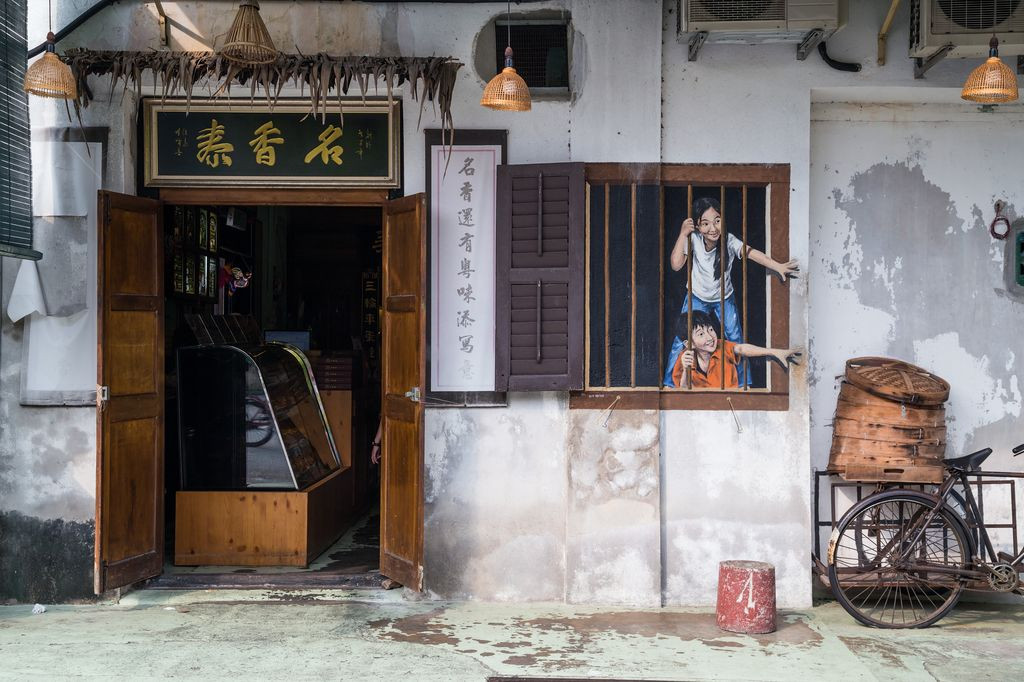 Wall art of two children reaching out from a window in Georgetown, Malaysia
Wall art of two children reaching out from a window in Georgetown, Malaysia
Q3: What is the best time to travel to Malaysia?
The dry season from March to September is generally the best time to visit.
Q4: Is Malaysia expensive to visit?
Malaysia offers good value for money, balancing affordability with quality services and amenities.
Q5: What are some must-try foods in Malaysia?
Must-try dishes include Nasi Lemak, Laksa, Char Kway Teow, and Roti Canai.
Q6: Do I need a visa to visit Malaysia?
Many nationalities can enter Malaysia visa-free for up to 90 days. Check the latest visa regulations before your trip.
Q7: Is it safe to travel in Malaysia?
Malaysia is generally safe for tourists, with a low crime rate and stable political environment.
Q8: What should I pack for a trip to Malaysia?
Pack light clothing, comfortable shoes, sunscreen, and insect repellent.
Q9: How can I get around in Malaysia?
Transportation options include taxis, buses, trains, and ride-hailing services.
Q10: What is ecotourism like in Malaysia?
Ecotourism in Malaysia promotes sustainable travel practices, conservation efforts, and community engagement.



